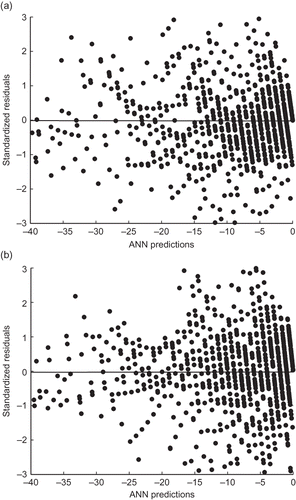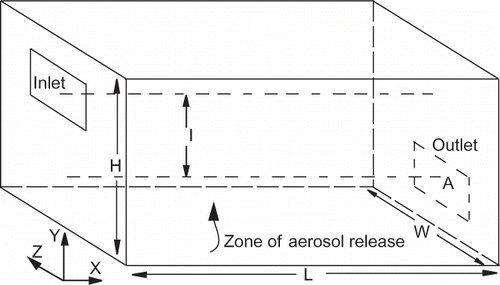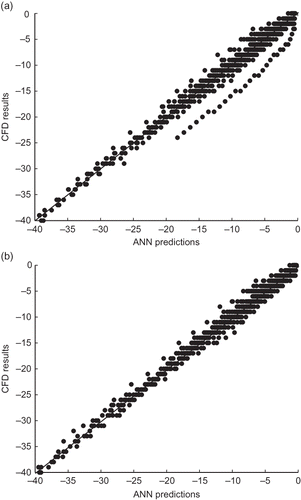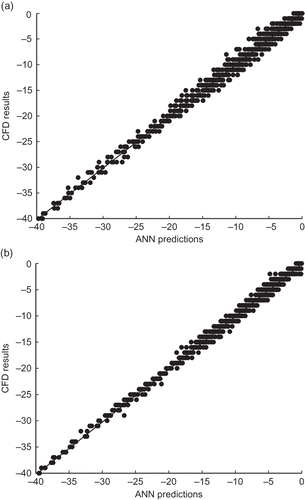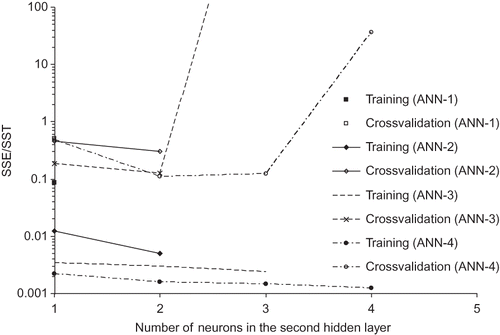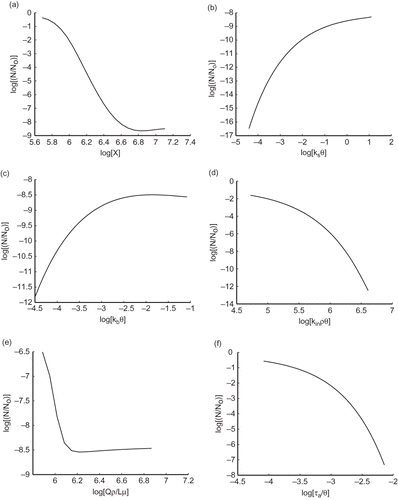Figures & data
Table 1. List of variables
Table 2. Range for each of the dimensionless groups
Table 3. Design space of the chosen six dimensionless groups
Figure 2. Plot of normalized number of viable particles remaining in the room over time; ClO2 was injected at 0 sec (case 14).
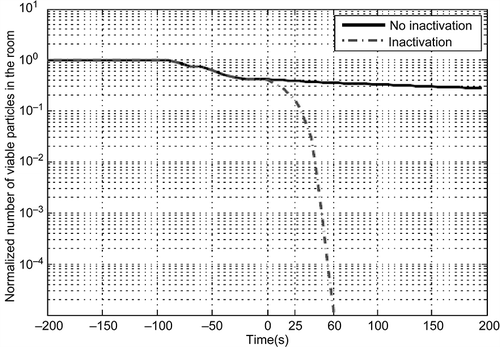
Figure 3. Plot of normalized number of viable particles remaining in the room over time, ClO2 injected at 0 sec (case 22).
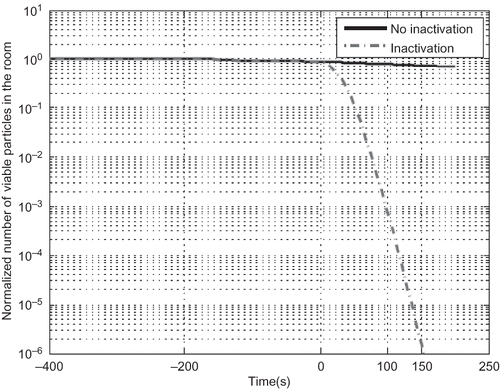
Figure 4. Linear model results. (a) CFD results against predicted results; (b) standardized residual plot.
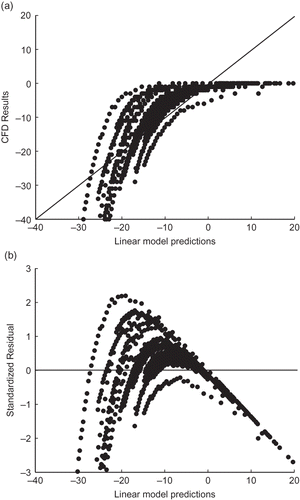
Figure 5. Quadratic model results. (a) CFD results against predicted results; (b) standardized residual plot.
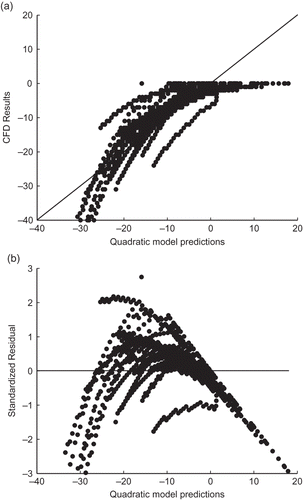
Table 4. Change of SSE with increasing number of neurons for architecture with one hidden layer
Figure 8. Change of sum of square of errors with increasing number of neurons; architecture with one hidden layer.
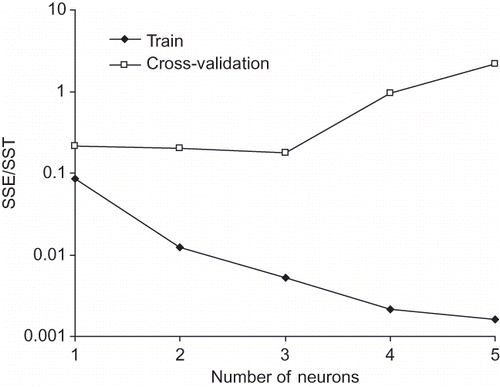
Figure 10. Standardized residual plot (a) for ANN6-2-2-1 predictions (b) for ANN6-3-2-1 predictions.
